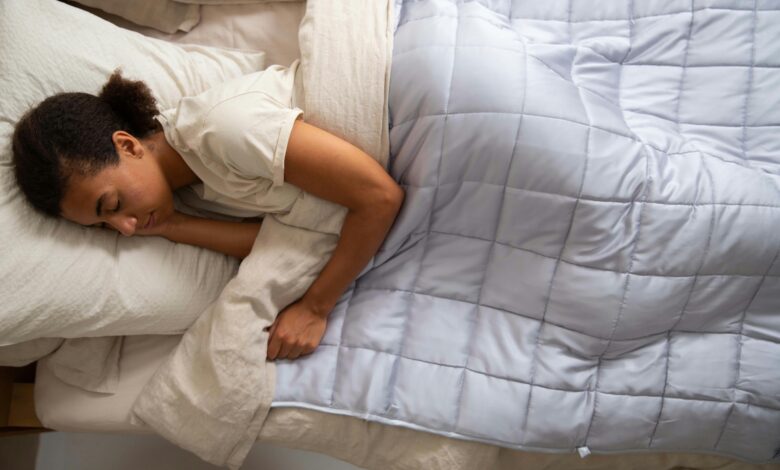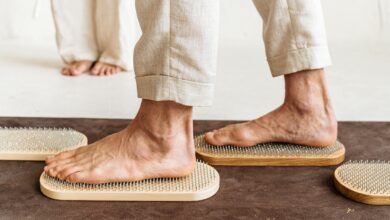The Best Techniques for Improving Sleep Quality

Sleep is one of the most vital components of overall health and well-being. Yet, many people struggle with poor sleep quality, which can lead to fatigue, irritability, reduced cognitive function, and long-term health issues like heart disease, diabetes, and depression. Fortunately, there are proven techniques that can help you improve your sleep quality and wake up feeling refreshed and energized.
In this article, we’ll explore the best techniques for improving sleep quality , from establishing a consistent routine to creating an optimal sleep environment and addressing underlying factors that may disrupt your rest.
Why Is Sleep Quality Important?
Before diving into solutions, it’s essential to understand why sleep quality matters. While the quantity of sleep (how many hours you get) is important, the quality of sleep—how restorative and uninterrupted it is—plays a critical role in physical and mental health. High-quality sleep allows your body to repair tissues, regulate hormones, consolidate memories, and recharge for the next day.
Poor sleep quality, on the other hand, can result in:
- Daytime drowsiness and low energy.
- Difficulty concentrating and making decisions.
- Increased stress and mood swings.
- Weakened immune system.
- Higher risk of chronic conditions like obesity, hypertension, and cardiovascular disease.
Now that we understand its importance, let’s dive into actionable strategies to enhance your sleep quality.
Technique 1: Establish a Consistent Sleep Schedule
One of the most effective ways to improve sleep quality is by maintaining a regular sleep schedule. Your body operates on a natural circadian rhythm, which regulates your sleep-wake cycle. Disrupting this rhythm can lead to insomnia and poor sleep.
1. Go to Bed and Wake Up at the Same Time Every Day
- Set a fixed bedtime and wake-up time, even on weekends or days off.
- Consistency helps train your body to fall asleep and wake up naturally.
2. Avoid Long Naps During the Day
- If you need a nap, limit it to 20-30 minutes to avoid interfering with nighttime sleep.
3. Gradually Adjust Your Schedule
If your current sleep schedule is irregular, make small adjustments (e.g., shifting bedtime by 15 minutes earlier each night) until you reach your desired routine.
Technique 2: Create an Optimal Sleep Environment
Your sleeping environment plays a significant role in how well you sleep. A comfortable, calming space can promote relaxation and signal to your brain that it’s time to wind down.
1. Invest in a Comfortable Mattress and Pillows
- Choose a mattress and pillows that support your preferred sleeping position (back, side, or stomach).
- Replace old or worn-out bedding to ensure comfort.
2. Control Light Levels
- Use blackout curtains or an eye mask to block out light.
- Dim bright lights in the evening and avoid screens (phones, tablets, TVs) at least an hour before bed, as blue light suppresses melatonin production.
3. Regulate Temperature
- Keep your bedroom cool, ideally between 60-67°F (15-19°C), as cooler temperatures promote deeper sleep.
4. Reduce Noise
- Use earplugs, white noise machines, or fans to drown out disruptive sounds.
- If possible, address sources of noise in your environment.
5. Declutter Your Space
A tidy, organized bedroom creates a calming atmosphere conducive to sleep.
Technique 3: Develop a Relaxing Pre-Sleep Routine
Establishing a pre-sleep routine signals to your body that it’s time to relax and prepare for rest. Activities that promote relaxation can help ease the transition from wakefulness to sleep.
1. Practice Relaxation Techniques
- Meditation : Spend 5-10 minutes practicing mindfulness or guided meditation.
- Deep Breathing : Try the 4-7-8 breathing technique: inhale for 4 seconds, hold for 7 seconds, and exhale for 8 seconds.
- Progressive Muscle Relaxation : Tense and then release each muscle group in your body, starting from your toes and working upward.
2. Take a Warm Bath or Shower
The drop in body temperature after a warm bath or shower can trigger feelings of drowsiness.
3. Read a Book or Listen to Calming Music
Choose non-stimulating activities like reading a physical book (not on a screen) or listening to soothing music or nature sounds.
4. Avoid Stimulants Before Bed
- Limit caffeine intake to the morning or early afternoon.
- Avoid nicotine and alcohol close to bedtime, as they can disrupt sleep cycles.
Technique 4: Manage Stress and Anxiety
Stress and anxiety are common culprits of poor sleep quality. Learning to manage these emotions can significantly improve your ability to fall and stay asleep.
1. Journal Before Bed
Write down your thoughts, worries, or to-do lists to clear your mind before sleep.
2. Practice Gratitude
Reflect on three things you’re grateful for each night. This shifts your focus away from stressors and promotes positivity.
3. Seek Professional Help
If stress or anxiety persists, consider speaking with a therapist or counselor who can provide tools like cognitive-behavioral therapy for insomnia (CBT-I).
Technique 5: Exercise Regularly
Physical activity has been shown to improve sleep quality by reducing stress, increasing daytime energy expenditure, and promoting deeper sleep.
1. Aim for Moderate Exercise
Activities like walking, jogging, yoga, or swimming can enhance sleep quality without overexertion.
2. Time Your Workouts Wisely
Avoid vigorous exercise within 2-3 hours of bedtime, as it may increase alertness and make it harder to fall asleep.
3. Incorporate Stretching or Yoga
Gentle stretches or yoga poses, such as child’s pose or legs-up-the-wall, can relax muscles and calm the mind before bed.
Technique 6: Watch Your Diet
What you eat and drink can impact your sleep quality. Making mindful dietary choices can help you achieve more restful nights.
1. Eat Light Evening Meals
Heavy or spicy meals close to bedtime can cause indigestion and disrupt sleep. Aim to finish eating 2-3 hours before bed.
2. Include Sleep-Promoting Foods
Foods rich in tryptophan (e.g., turkey, nuts, seeds), magnesium (e.g., leafy greens, bananas), and melatonin (e.g., cherries, walnuts) can support better sleep.
3. Stay Hydrated—but Not Too Much
Drink enough water throughout the day but reduce fluid intake in the evening to prevent frequent bathroom trips during the night.
Technique 7: Address Underlying Sleep Disorders
If you’ve tried multiple techniques and still struggle with poor sleep quality, it’s worth investigating whether an underlying sleep disorder might be the cause.
1. Insomnia
Difficulty falling or staying asleep may require behavioral interventions like CBT-I or medication under medical supervision.
2. Sleep Apnea
Symptoms include loud snoring, gasping for air during sleep, and excessive daytime fatigue. Consult a doctor if you suspect sleep apnea.
3. Restless Legs Syndrome (RLS)
Uncomfortable sensations in the legs at night may necessitate lifestyle changes or medication.
4. Circadian Rhythm Disorders
Shift work, jet lag, or irregular schedules can disrupt your internal clock. Light therapy or melatonin supplements may help reset your rhythm.
Technique 8: Monitor and Track Your Sleep
Tracking your sleep patterns can provide valuable insights into what’s working—and what isn’t—in your quest for better sleep.
1. Use a Sleep Tracker
Devices like fitness trackers or smartphone apps can monitor metrics like sleep duration, stages (light, deep, REM), and interruptions.
2. Keep a Sleep Diary
Record details like bedtime, wake time, sleep quality, and any factors that may have influenced your rest (e.g., stress, late-night snacks).
3. Analyze Patterns
Look for trends in your data to identify areas for improvement, such as adjusting your bedtime or addressing specific disruptions.



